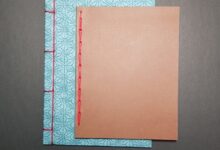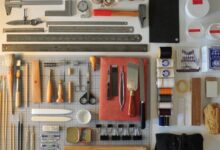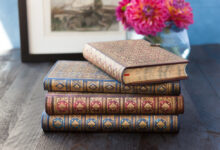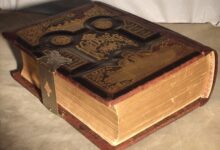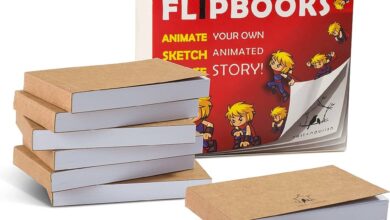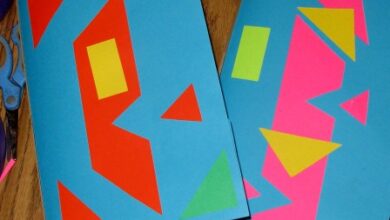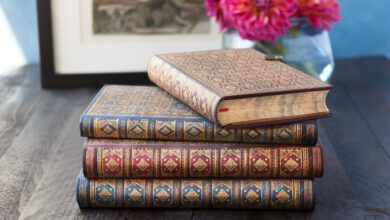10 Must-Have Tools for Successful BookBinding
Hello, visitors! Welcome to our guide on 10 Must-Have Tools for Successful BookBinding. BookBinding is an art form that requires proper tools for a successful outcome. Whether you’re a beginner or an expert in bookbinding, having the right tools can make all the difference in producing beautiful, long-lasting books. In this article, we have compiled a list of the 10 must-have tools for successful bookbinding. Let’s get started!
Contents
- 1 1. Cutting Mat 📏
- 2 2. Bone Folder 🦴
- 3 3. Awl 🗡️
- 4 4. Cutting Knife 🔪
- 5 5. Glue Brush 🖌️
- 6 6. Ruler 📏
- 7 7. Folding Bone 🦴
- 8 8. Bookbinding Thread 🧵
- 9 9. Book Press 📚
- 10 10. PVA Glue 🧪
- 11 FAQs
- 11.1 1. How do I choose the right cutting mat?
- 11.2 2. Which bone folder is best for bookbinding?
- 11.3 3. How do I use an awl without tearing the paper?
- 11.4 4. What type of cutting knife is best for bookbinding?
- 11.5 5. How do I use a glue brush effectively?
- 11.6 6. What should I consider when choosing a ruler?
- 11.7 7. How do I use a book press effectively?
- 11.8 8. What type of thread is best for bookbinding?
- 11.9 9. Which type of bookbinding glue is best?
- 11.10 10. How do I create a perfect fold in paper?
- 11.11 11. Can I use regular glue for bookbinding?
- 11.12 12. Can I use a regular hobby knife for bookbinding?
- 11.13 13. Do I need a book press for bookbinding?
- 12 Conclusion
- 13 Disclaimer
1. Cutting Mat 📏
A cutting mat is an essential tool for any bookbinder. It protects your work surface and allows you to make precise cuts without damaging your blades. Cutting mats come in various sizes, and the best one is the one that covers your entire work area. It’s recommended to invest in a self-healing cutting mat to prolong its lifespan.
Types of Cutting Mat
There are various types of cutting mats available in the market, which include self-healing mats, rotary cutting mats, and desk mats.
How to Use a Cutting Mat?
To use a cutting mat, place it on a flat and even surface. It’s recommended to use a mat that covers your entire work area to avoid cuts or damages due to knife slips. When using a cutting mat, ensure that you’re using sharp blades, so you don’t end up with rough and jagged edges. Remember to clean the mat regularly to remove excess debris and prevent mat staining.
2. Bone Folder 🦴
A bone folder is a sturdy tool used for folding and creasing paper to create a sharp, neat fold. It’s made of bone, plastic, or Teflon, and it’s an essential tool for bookbinding. A bone folder is used to press down on the paper, creating a smooth fold without leaving visible marks.
Types of Bone Folder
There are various types of bone folders available in the market, which include plastic bone folders and Teflon bone folders. Each has its advantages and disadvantages, and it’s up to you to choose the one that suits your needs best.
How to Use a Bone Folder?
When using a bone folder, hold it by the center, with your thumb on one side and your fingers on the other side. Apply pressure on the paper with the bone folder to create a sharp fold. It’s important to use a consistent amount of pressure to create uniform folds.
3. Awl 🗡️
An awl is a sharp tool used for punching holes on paper, leather, or other materials. It’s an important tool for bookbinding, used for creating sewing holes in the book’s spine. Awls come in different shapes and sizes, and the best one is the one that feels comfortable in your hand.
Types of Awl
There are various types of awls available in the market, which include round awls, diamond awls, and stitching awls. Each type has its advantages and disadvantages, and it’s up to you to choose the best one that suits your needs.
How to Use an Awl?
To use an awl, place the paper or material on a sturdy surface, hold the awl on one end and apply pressure on the handle to create a hole. It’s essential to use the correct amount of pressure, so you don’t end up with an irregular hole or tear the paper or material.
4. Cutting Knife 🔪
A cutting knife is a sharp tool used for cutting paper, leather, and other materials. It’s an important tool for bookbinding, which helps to produce clean and precise cuts. A cutting knife comes in different sizes and shapes, and it’s essential to choose the one that feels most comfortable in your hands.
Types of Cutting Knife
There are various types of cutting knives available in the market, which include utility knives, box cutters, and X-Acto knives. Each type has its advantages and disadvantages, and it’s up to you to choose the best one that suits your needs.
How to Use a Cutting Knife?
To use a cutting knife, hold the knife steady with one hand and apply pressure on the other end to make a clean and precise cut. It’s important to use the correct amount of pressure to avoid rough and jagged edges.
5. Glue Brush 🖌️
A glue brush is an essential tool for bookbinding. It’s used to apply glue on paper or other materials for binding. A good glue brush should have a high-quality bristle, which does not shred or leave hairs behind.
Types of Glue Brush
There are various types of glue brushes available in the market, which include round brushes, flat brushes, and angled brushes. Each type has its advantages and disadvantages, and it’s up to you to choose the best one that suits your needs.
How to Use a Glue Brush?
To use a glue brush, apply glue to the brush and then apply it evenly to the paper or material. Be careful to avoid over-applying glue to prevent the pages from sticking together.
6. Ruler 📏
A ruler is an essential tool for bookbinding. It helps to measure and cut paper or other materials to the correct size accurately. Rulers come in different shapes and sizes, and it’s important to choose the one that covers your work area.
Types of Ruler
There are various types of rulers available in the market, which include steel rulers, cork-backed rulers, and transparent rulers. Each type has its advantages and disadvantages, and it’s up to you to choose the best one that suits your needs.
How to Use a Ruler?
To use a ruler, place the ruler on the material and draw a line with a pencil or a cutting knife. It’s important to hold the ruler securely to prevent it from slipping or moving while cutting or drawing.
7. Folding Bone 🦴
A folding bone is an essential tool for bookbinding. It helps to create a smooth and sharp fold in paper or other materials. A good folding bone should have a smooth surface and a comfortable grip.
Types of Folding Bone
There are various types of folding bones available in the market, which include plastic folding bones and Teflon folding bones. Each type has its advantages and disadvantages, and it’s up to you to choose the one that suits your needs.
How to Use a Folding Bone?
To use a folding bone, place it on the paper or material and apply pressure to create a sharp crease. It’s important to use an even and consistent pressure to create uniform creases.
8. Bookbinding Thread 🧵
A bookbinding thread is an essential tool for bookbinding. It’s used to sew the pages together, creating a strong and durable binding. Bookbinding threads come in different types and thicknesses, and the best one is the one that suits your needs best.
Types of Bookbinding Thread
There are various types of bookbinding threads available in the market, which include linen thread, cotton thread, and silk thread. Each type has its advantages and disadvantages, and it’s up to you to choose the best one that suits your needs.
How to Use a Bookbinding Thread?
Firstly, thread your needle with the bookbinding thread. Then, poke holes in the spine of the book with an awl, and sew the pages together using a kettle stitch. Ensure that the thread is sewn tightly to create a strong and durable binding.
9. Book Press 📚
A book press is an essential tool for bookbinding. It’s used to press the pages together, ensuring that the binding is strong and durable. A good book press should have a solid structure and even pressure.
Types of Book Press
There are various types of book presses available in the market, which include clamp book press, standing press, and lying press. Each type has its advantages and disadvantages, and it’s up to you to choose the one that suits your needs.
How to Use a Book Press?
To use a book press, stack the pages together and place them in the press. Tighten the screws or clamps to apply even pressure on the pages. Leave the book in the press for a few hours or overnight, depending on the size of the book.
10. PVA Glue 🧪
PVA glue is an essential tool for bookbinding. It’s a strong and durable adhesive used in bookbinding. PVA glue comes in different viscosities, and the best one is the one that suits your needs.
Types of PVA Glue
There are various types of PVA glue available in the market, which include standard PVA glue, white PVA glue, and archival PVA glue. Each type has its advantages and disadvantages, and it’s up to you to choose the one that suits your needs.
How to Use PVA Glue?
To use PVA glue, apply it evenly to the pages or material using a glue brush. Be careful not to over-apply the glue, as it could cause the pages to stick together. Wait until the glue is dry before proceeding with the next step in bookbinding.
| Tools | Advantages | Disadvantages |
|---|---|---|
| Cutting Mat | Protects work surface, precise cuts | Needs replacement after some time |
| Bone Folder | Sharp, neat folds | Can leave marks on paper |
| Awl | Creates sewing holes, sharp tool | Can tear paper or material if not used carefully |
| Cutting Knife | Clean and precise cuts | Can cause injury if not used carefully |
| Glue Brush | Even application of glue, no visible brush marks | Needs cleaning after every use |
| Ruler | Accurate measurements and cuts | Can slip or move while cutting or drawing |
| Folding Bone | Sharp and smooth crease | Can leave marks on paper |
| Bookbinding Thread | Creates strong and durable bindings | Needs careful threading and sewing |
| Book Press | Even pressure, strong bindings | Bulky and heavy, not easy to move |
| PVA Glue | Strong and durable adhesive | Needs drying time and careful application |
FAQs
1. How do I choose the right cutting mat?
You should choose a cutting mat that covers your entire work area and is self-healing to prolong its lifespan.
2. Which bone folder is best for bookbinding?
The best bone folder is the one that feels comfortable in your hand and has a smooth surface.
3. How do I use an awl without tearing the paper?
Apply the correct amount of pressure and use a sharp awl to avoid tearing the paper.
4. What type of cutting knife is best for bookbinding?
The best cutting knife is the one that feels comfortable in your hand and can produce clean and precise cuts.
5. How do I use a glue brush effectively?
Avoid over-applying glue and clean the brush after every use to prevent excess glue from sticking on it.
6. What should I consider when choosing a ruler?
Choose a ruler that covers your work area and has a solid structure to prevent it from slipping or moving while cutting or drawing.
7. How do I use a book press effectively?
Apply even pressure on the book and leave it in the press for a few hours or overnight, depending on the size of the book.
8. What type of thread is best for bookbinding?
The best thread for bookbinding is the one that suits your needs, whether it’s linen thread, cotton thread or silk thread.
9. Which type of bookbinding glue is best?
Archival PVA glue is the best glue for bookbinding, as it’s acid-free and won’t yellow over time.
10. How do I create a perfect fold in paper?
Use a bone folder and apply even pressure to create a sharp and smooth fold.
11. Can I use regular glue for bookbinding?
No, regular glue is not recommended for bookbinding as it’s not strong or durable enough to create long-lasting bindings.
12. Can I use a regular hobby knife for bookbinding?
No, the best cutting knife for bookbinding is the one that’s specifically designed for bookbinding, as it creates clean and precise cuts.
13. Do I need a book press for bookbinding?
Yes, a book press is an essential tool for bookbinding, as it applies even pressure to the pages, creating strong and durable bindings.
Conclusion
Bookbinding is an art form that requires patience, dedication, and proper tools. Investing in the right tools enhances your experience and enables you to produce beautiful and long-lasting books. In this article, we have highlighted the 10 must-have tools for successful bookbinding. We hope that this guide has been helpful, and you’re now ready to start bookbinding like a pro!
Don’t forget to share your thoughts with us in the comments section below. Happy bookbinding!
Disclaimer
The information provided in this article is for educational and informational purposes only, and it’s not intended as a substitute for professional advice. Always seek the advice of a qualified professional before undertaking any bookbinding activities.
Originally posted 2023-06-15 03:00:00.
